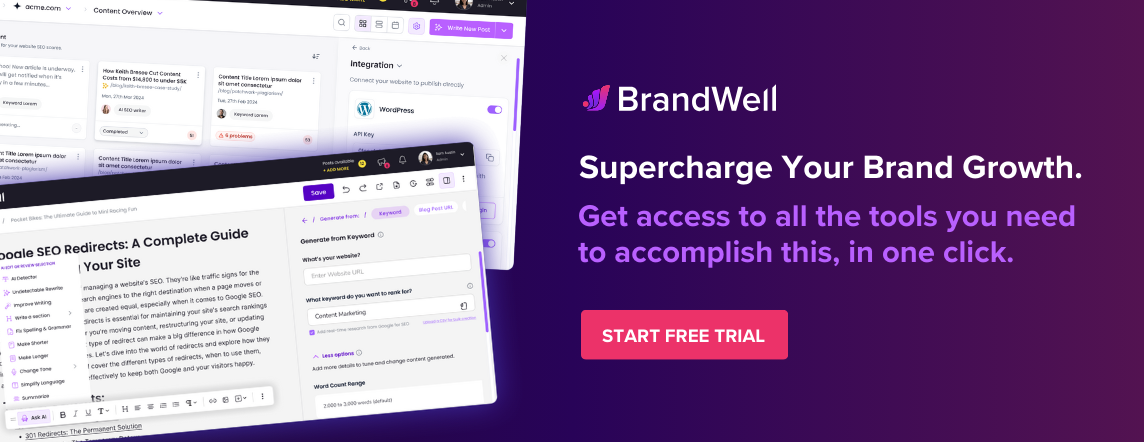Discover top guides, trends, tips and expertise from AIO Writers

In the realm of SEO, the meta title tag holds paramount importance — it’s your first chance to make a good impression on both search engines and potential visitors. But what is the ideal meta tag title length to captivate attention and not get cut off?
In this post, we’ll talk about the ideal meta tag title length, ensuring your titles are not only eye-catching but also optimized to perfection.
Learn the nuances of meta titles and discover how the right length can significantly boost your click-through rates and search engine rankings.
Table Of Contents:
- What is a Meta Title Tag?
- How Meta Tag Title Length Impacts SEO
- How to Write Great Meta Title Tags for Better Click-Through Rates
- Examples of Well-Optimized Meta Tag Titles
- Tools and Techniques for Optimizing Meta Tag Title Length
- Meta Titles and Meta Descriptions
- FAQs: Meta Tag Title Length
- Conclusion
What is a Meta Title Tag?
The importance of meta titles—or title tags—in on-page SEO can’t be overstated. These snippets give search engines and people an instant idea of what to expect from your page.
But here’s the thing: if your meta title is too long, it’ll get cut off in search results. And that’s not a good look for your SEO or your click-through rates.
Ideal Meta Tag Title Length
So, what’s the sweet spot for meta title length?
In 2024, the optimal meta title tag length is still 50-60 characters. Even with all the updates and changes in the world of search, this sweet spot remains the same.
Why? Because it ensures your titles will fully display on both desktop and mobile search results pages without getting truncated.
The first 50-60 characters of a title tag are what usually show up in search results.
Anything longer gets cut off with an ellipsis (…), like in the example below.

While Google may sometimes automatically adjust titles based on the search query, well-optimized title tags within the recommended length are typically displayed as is.
It’s also important to note that meta titles display differently on desktop versus mobile searches. Mobile titles tend to be shorter due to limited screen space. So, frontloading those target keywords is extra important for mobile SEO.
But what if Google decides your meta title isn’t up to par?
In some cases, search engines may choose to display an alternative title pulled from your page content instead. That’s why optimizing H1 tags and other on-page elements is just as crucial.
At the end of the day, the goal is to create concise, compelling meta titles that search engines will be happy to display as-is. These are unique meta titles that not only rank higher but also make users eager to click and explore your content further.
Quick Tips for Writing Title Tags
If you want to get those title tags just right, follow these best practices for writing a good headline:
- Put your most important keywords near the beginning
- Keep it under 60 characters (I know, I’m repeating myself, but it’s that important.)
- Make each title unique and descriptive
- Use action words to entice clicks
- Include your brand name at the end
These tips have allowed me to create irresistible meta titles for both search engines and people browsing online.
How Meta Tag Title Length Impacts SEO
Scrolling through search results, certain links just stand out more than others, right? Often, it’s an engaging meta title and description that catch your eye while giving Google insight into the page’s content.
If folks are clicking on your site, it signals to Google that what you’ve got is important and useful. That little nudge can really help bump up your ranking.
Descriptive, keyword-rich titles and descriptions help Google figure out what your page is about. This makes it easier for them to show your snippets in relevant searches.
So, while meta tag title length might seem like a small thing, it can actually have a big impact on your on-page SEO and overall ranking.
How to Write Great Meta Title Tags for Better Click-Through Rates
Think of title tags as the rock stars of on-page SEO. They let search engines know what your content covers, and they show up as those clickable titles you see in search results.
Crafting well-optimized meta titles with your target keywords can seriously boost your rankings and organic traffic. I’m talking top of the search results kind of impact.
What’s the secret to writing click-worthy title tags?
Craft Unique and Compelling Titles
First things first, your meta titles need to be unique and compelling. They should accurately reflect your page content and use attention-grabbing phrases that match search intent.
Skip generic titles like “Home” or “Product Page.”
Instead, be specific and highlight what makes your page stand out. Give visitors a compelling reason to click on your link over others.
Incorporate Keywords Naturally
I know you want to stuff those target keywords in your title tags for better SEO, but resist the urge. Focus on incorporating your primary keyword phrases naturally near the beginning of your title.
Readability always trumps keyword density. You want your titles to engage users, not turn them off with clunky keyword stuffing.
Keep it natural and clickable.
Deliver Your Message Clearly
Your meta title should be a one-line summary of your page content. Be specific, descriptive, and clear so users know exactly what to expect before they click.
Avoid clickbait or misleading titles that don’t align with your actual content!
You might get the click, but you’ll lose the trust of your visitor just as fast.
Deliver on your title’s promise, every time.
Examples of Well-Optimized Meta Tag Titles
Check out these great examples of well-optimized meta titles from various industries.
- For a clothing retailer: “Shop the Latest Trends in Women’s Fashion [Brand Name]”
- For a software company: “Project Management Software for Teams [Brand Name]”
- For a recipe site: “Easy Chicken Parmesan Recipe [Brand Name]”
As you can see, each of these titles includes the brand name, a clear description of what’s on the page, and some relevant keywords. That’s the winning formula for a good meta title that avoids keyword stuffing while still being optimized for search engines.
For some cool title tag hacks, read this title tag guide from Moz.
Tools and Techniques for Optimizing Meta Tag Title Length
As an SEO specialist, I’ve discovered that the right tools can really boost your meta tag title length optimization.
My favorites are Rank Math for detailed insights, Google Sheets for organizing data, and ChatGPT to spark new ideas.
When it comes to writing meta titles, I like to start by doing some competitor analysis. See what’s working for them and use that as inspiration for your own titles. Just make sure you’re not copying them word-for-word.
Another handy trick is to use a free meta description generator like Ahrefs or Dashword. It’s a great place to start, but make sure you tweak it so it fits your specific page perfectly.
Lastly, try a headline analyzer to drive more clicks and views to your blog posts, YouTube videos, emails, podcast episodes, TikTok videos, and Instagram posts. One such tool is Co-Schedule’s Headline Analyzer.
Meta Titles and Meta Descriptions
Your meta titles and meta descriptions should always be in sync. Even though they’re different components, they function as a team.
Your meta title is the headline of your page — it’s what grabs people’s attention in the search results — while your meta description is where you can really sell the reader on clicking through.

What is the ideal meta description length?
Aim for a meta description length of around 155-160 characters. That way, you can give a good overview of what’s on the page without getting cut off in the search results.
What makes a good meta description?
When crafting your meta descriptions, highlight what makes you stand out. Show off your unique value proposition. And remember, every page should have its own meta description to avoid any duplicates.
Tips for Writing a Great Meta Description
Keep It Concise and Clear: Make sure your key message fits within the character limit to prevent it from being cut off.
Incorporate Keywords: Include your primary keyword naturally within the description. This helps with SEO and indicates to users that your content is relevant. Use variations and related terms to cover more search queries.
Focus on User Intent: Make sure the meta description accurately reflects the content of the page. Address the user’s needs or problems directly, offering a clear solution or benefit.
Use Actionable Language: Encourage users to take action with phrases like “Learn more,” “Discover,” “Find out,” or “Get started.” Use words that evoke curiosity, excitement, or urgency.
Highlight Unique Selling Points (USPs): Mention unique features, benefits, or offers that make your content stand out from the competition. Clearly state the value users will get from clicking on your link.
Make It Readable and Appealing: Write in a conversational and easy-to-understand manner. Don’t cram in keywords; ensure the description reads smoothly and naturally.
Meta Description Examples
Here are some good examples of meta descriptions for various types of content:
For a Blog Post on Healthy Eating:
“Discover delicious and easy-to-make healthy recipes that fit your busy lifestyle. Start eating better today with our expert tips and meal plans!”
For an E-commerce Product Page:
“Upgrade your home with our stylish and affordable furniture. Shop now and enjoy free shipping on orders over $50!”
For a Travel Guide:
“Planning your next adventure? Explore the top 10 must-visit destinations for 2024. Get insider tips, travel hacks, and more!”
By following these tips, you can write meta descriptions that not only improve your SEO but also entice users to click on your link, driving more traffic to your site.
FAQs: Meta Tag Title Length
How long should the title tag be?
A meta title tag should ideally be between 50-60 characters to fit well in search engine results.
What is the character limit of a meta title?
The maximum character limit for a meta title is about 60 characters. This prevents truncation by search engines.
Should meta description be between 170 and 260 characters?
No, aim for around 150-160 characters. Longer descriptions may get cut off in Google snippets, impacting readability.
Conclusion
Meta tag title length might seem like a small fish in the big pond of SEO, but it packs a mighty punch. It’s the hook that reels in curious readers, the billboard that catches the eye in a sea of search results.
By crafting compelling, concise titles that hit that sweet spot in length, you’re giving your content the best chance to shine.
If you’re using BrandWell to create content, you won’t have to worry about meta tag title lengths because all metadata is automatically generated by AI — making sure your meta title is snappy, relevant, and within the ideal number of characters.

UNLOCK YOUR POTENTIAL
Long Headline that highlights Value Proposition of Lead Magnet
Grab a front row seat to our video masterclasses, interviews, case studies, tutorials, and guides.



